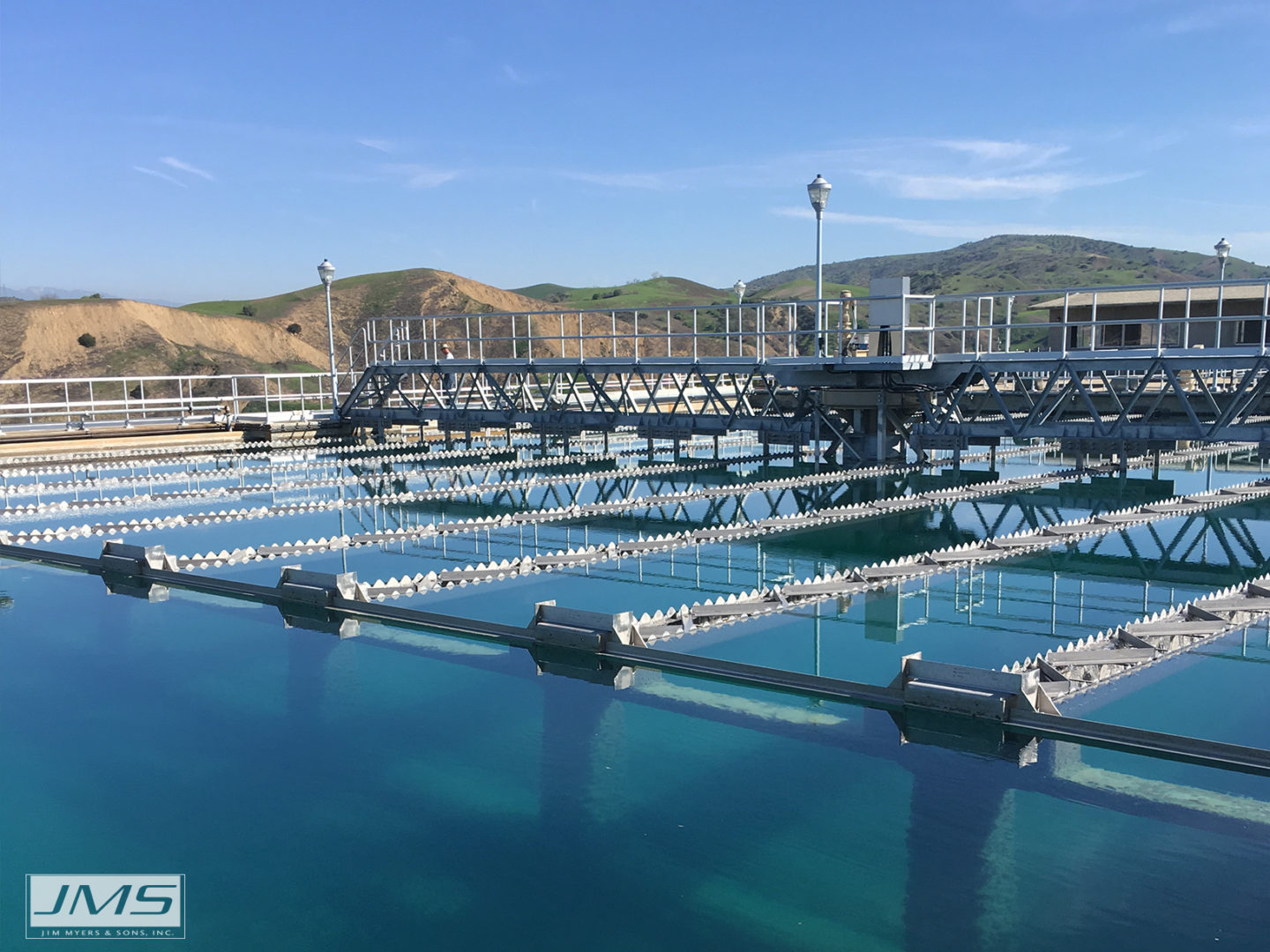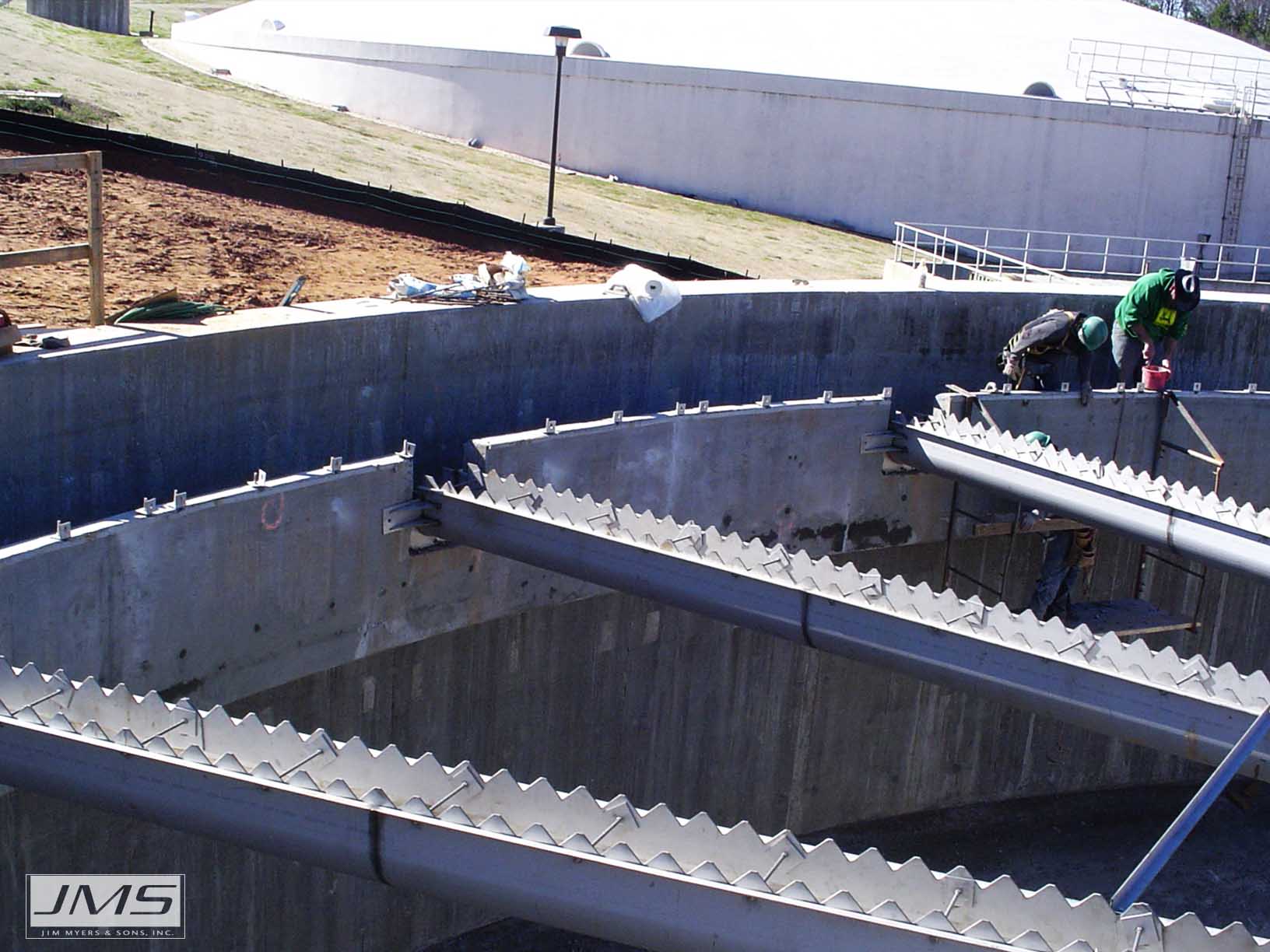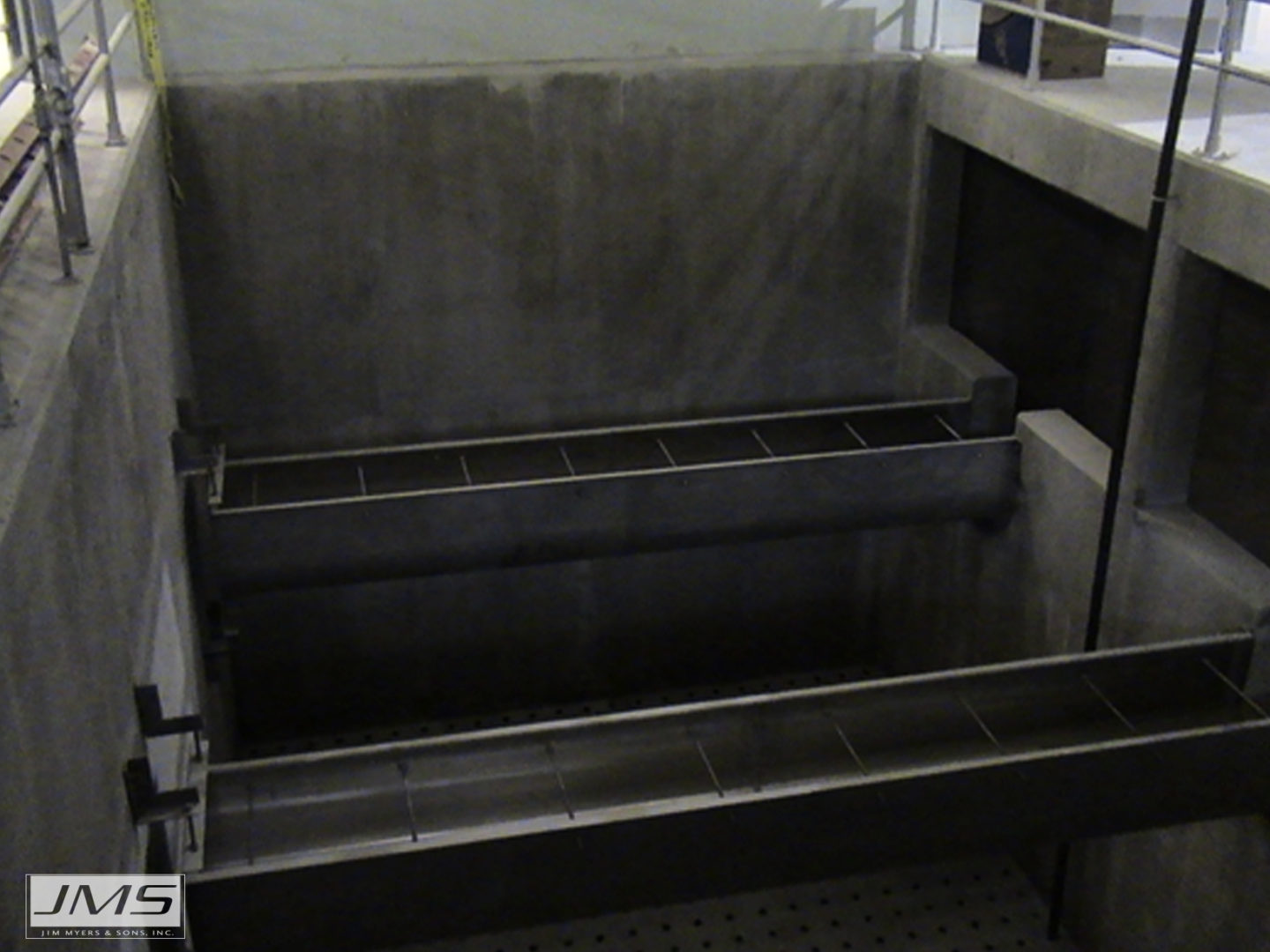Watch this JMS Presentation on the JMS Mega-TROUGH (Trough System). Josh Franks, Senior Application Engineer of JMS, talks about what kinds of troughs are used in Water Treatment Plants and what are the best design considerations for trough designs.
Troughs are used in Water and Wastewater Treatment Plants to help transport material to different locations. In circular form they are used as effluent troughs in clarifiers, and straight orientation troughs are used in sedimentation basins. Special care is necessary in the design of troughs to support vertical and lateral loads, and provide maximum longevity.
Typical types of troughs used in Water Treatment Plants
- Effluent troughs
- Filter troughs
- Clarifier troughs
- Sluice troughs
Effluent Troughs
Effluent troughs are used in Water Treatment plants that have a large enough basin to allow adequate settling time so that they do not need to use plate settlers or tube settlers. The length and the quantity of the troughs is determined by overall weir length required at any given flow.
Watch the rest of trough design consideration presentations to learn more about:
- Clarifier troughs
- Filter troughs
- Sluice troughs
- JMS success stories
- And more
Josh Franks is a Sr. Applications Engineer and has been with JMS for 11 years. Over this time, Josh has had the opportunity to assist our reps in selling equipment from the Mega-TREATMENT, Bio-HANDLING, and Delta-SEPARATION product lines. Currently, he focuses on the Mega-TREATMENT product lines. He has a BS in Mechanical Engineering from NC State University and is a licensed P.E. in North Carolina since 2011. In Josh’s words, “I have enjoyed working with many of you over the last decade, and hope we can continue to grow together in the decades to come.”



